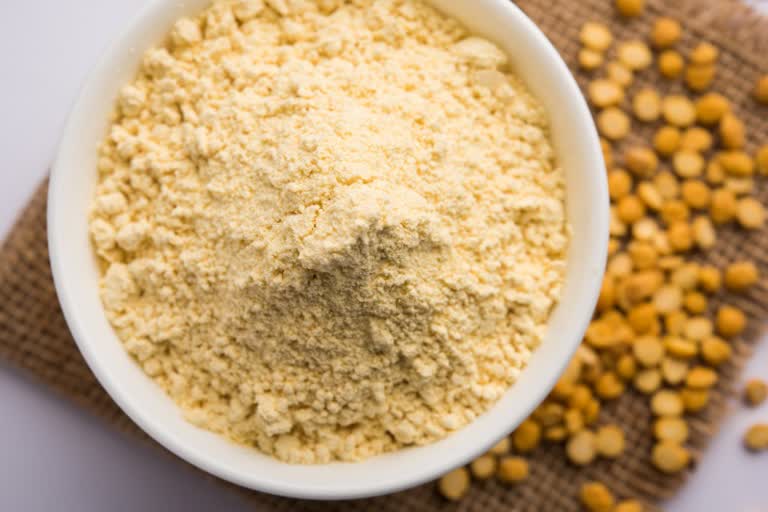Pulse flours are a great source of proteins in a vegetarian diet. They can be a perfect substitute for commercial protein shakes and powders. But they should be used with caution in patients having kidney disorders as the high protein content can have an adverse effect.
It is an ancient practice to use cereal and pulse flour mix as weaning food for babies. Infants 8 months and above are introduced to a homemade, healthy, and nutritious combination of cereals and pulses that are soaked, sprouted, dried, roasted, and then grounded into powder form. This is then made into a porridge and fed to babies. (Please check for any allergies in babies for 3 days before increasing the amount).
Roasting the pulses before grinding removes moisture from the grains, enhances the taste and aroma, and improves the shelf life of the flour.
Gram flour/Besan:
Made with dried chickpeas, Gram flour is another common ingredient that is part of every household and used in various recipes. Gram flour not only adds variety to the plate but is also rich in protein, iron, potassium, copper, zinc, phosphorous, folate, and vitamin B6.
Soybean flour:
Another really healthy flour, Soyabean is an excellent source of protein, bioactive components such as isoflavones, and dietary fiber. It is also a great source of iron, potassium, and B vitamins.
Soybean flour is highly beneficial in tackling the side effects of menopause and reduces the risk of breast cancer, prostate cancer and keeps the bones strong. Due to its rich protein content, it is advised to practice caution while having soybean flour by people having high uric acid and thyroid problems.
Moong flour:
Made from dried and roasted moong beans, this flour is gluten-free and has a very low glycemic index. Moong dal flour is easy to digest and hence it is used in regular diet during childhood, pregnancy, and lactation. It is low in fat and a rich source of protein, Vitamin B, calcium, potassium, and dietary fiber.
Urad dal flour:
Made from dried, ground whole urad dal, this flour is a good source of protein and dietary fiber and rich in iron, potassium, and B vitamins. It is used in making idli and dosa when mixed with rice flour mostly found in the South of India.
Despite the availability of different flours in India, the importance of wheat flour has remained undisputed, especially in the Northern region of the country. Using a particular flour individually may be tricky but one can always mix or opt for multigrain flour (Mixing 2 or more flour together) making it easier and feasible.
Multigrain flour provides a combination of nutrients in each grain and it is a good way to introduce millets in your diet. It is best to blend flours of your choice at home instead of buying readymade multigrain flour especially for people with severe health conditions.


